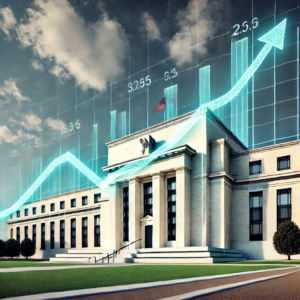Understanding the Federal Reserve’s Interest Rate Decisions and Their Economic Impact

Introduction
The Federal Reserve (Fed) plays a pivotal role in shaping the United States economy through its monetary policy decisions, particularly concerning the federal funds rate, commonly referred to as the “Fed rate.” These decisions influence borrowing costs, inflation, employment, and overall economic growth. Understanding how the Fed manipulates interest rates and the subsequent effects on the economy is crucial for both businesses and consumers.
What is the Federal Funds Rate?
The federal funds rate is the interest rate at which depository institutions lend balances to each other overnight. By adjusting this rate, the Fed influences the availability and cost of credit in the economy, thereby steering economic activity. For instance, lowering the rate makes borrowing cheaper, encouraging spending and investment, while raising it can help cool down an overheating economy and control inflation.
Recent Fed Rate Decisions
As of November 2024, the Federal Reserve cut its key interest rate by a quarter-point, reducing the benchmark rate to about 4.6%. This decision was influenced by a steady decline in inflation, which had previously reached a four-decade high. The rate cut reflects the Fed’s renewed focus on supporting the job market while keeping inflation in check.
Impact of Fed Rate Changes on the Economy
Adjustments to the Fed rate have wide-ranging effects:
-
Inflation Control: Increasing interest rates can help reduce inflation by making borrowing more expensive, thereby slowing consumer spending and business investment. Conversely, lowering rates can stimulate inflation if it’s below the Fed’s target.
-
Employment: Lower interest rates encourage businesses to expand and hire more workers, reducing unemployment. Higher rates may have the opposite effect, potentially slowing down job growth.
-
Stock Market: Rate hikes can lead to decreased stock prices as borrowing costs rise, reducing corporate profits. However, sectors like financials may benefit from higher rates.
Current Economic Indicators
Recent data indicates that U.S. consumers’ inflation expectations have soared to levels not seen since the early 1990s, posing a challenge to the Federal Reserve’s efforts to control price growth. This surge complicates the Fed’s task of convincing the public that inflation will fall to its 2% target.
Future Outlook
The Federal Reserve faces a complex landscape, balancing the need to support economic growth with the imperative to control inflation. Policymakers must consider various factors, including consumer expectations, global economic conditions, and fiscal policies, to make informed decisions about future rate adjustments.
Conclusion
The Federal Reserve’s interest rate decisions are instrumental in shaping the U.S. economy. By understanding the mechanisms and impacts of these decisions, individuals and businesses can better navigate the economic landscape and make informed financial choices.
Note: For the most accurate and updated information, please refer to official Federal Reserve announcements and reputable financial news sources.
Disclaimer: This post is for informational purposes only and should not be construed as financial advice. Always consult with a financial professional before making investment decisions.